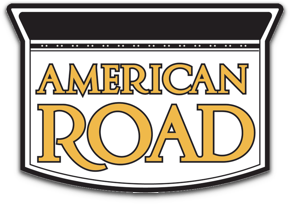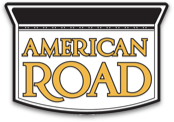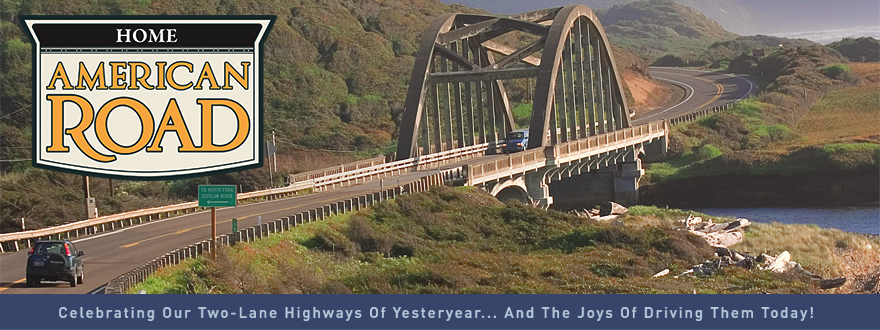-
Posts
1,247 -
Joined
-
Last visited
-
Days Won
1
Content Type
Profiles
Forums
Gallery
Blogs
Calendar
Everything posted by mobilene
-
Moeur's site is pretty cool and one I've referenced often in my travels. jim
-
My apologies; what I called FHWA Series D is actually FHWA Series E (Modified). 40 lashes with the wet noodle for me. To see what all the FHWA sign typefaces look like, go here: http://www.trafficsign.us/signtypeface. Rick, sorry to send you off on a compulsive tear, there, man! Next, look to see whether the signs are reflective or the older button-copy style with the little reflective buttons on the letters. When somebody pointed out the button-copy signs to me, I about drove myself crazy looking at every sign to see what kind it was. Button-copy signs are disappearing as they are replaced with the modern reflective ones. jim
-
Here's the whole story from the FHWA. Warning: Serious font geekery. http://mutcd.fhwa.dot.gov/HTM/clearfont/cf-english.htm As I understand it, Clearview's development was prompted to increase legibility of road signs at highway speeds, especially as the average driver's age has crept up. 1 in 5 drivers are over 65, they say. They looked at a number of ways to do it -- including just making the existing signs bigger -- but decided that a more legible typeface was a better solution. One thing I think Clearview does is increase recognition of words by their shapes. If I wrote the name of your hometown on posterboard, went out 100 yards and started walking toward you, you'd "read" the town's name based on its shape long before you could actually make out all of the letters. So at 75 mph on a busy highway, Clearview should let us see that sign in the distance sooner so we can respond to it. "Oh, that's the exit I want. I'd better get over." Most people can't tell the difference between typefaces, or don't care if they do. But typefaces are like colors in the effect they can have. I used to have a couple great reference books here that showed how setting the same paragraph in different typefaces could change the "color" of the text and how you perceived it before you even read it. I used to subscribe to this indie sci-fi magazine until it folded. They used New Century Schoolbook (I could tell just by looking at it) and it was just awful in that publication. It made the words stab at your eyes like daggers. I loved reading the stories, but found the typeface fatiguing. I used to use New Century Schoolbook in software manuals I wrote and it was pretty good -- legible from a distance (e.g., the user's lap), and fatigue wasn't an issue because most readers needed the info in just one or two paragraphs and then they went on with their day. Clearview will not seem that different because it and Highway Gothic have similar goals of communicating critical road information clearly from a distance. Typefaces that do well for a particular application tend to have similar characteristics, and most people can't tell the differences, or just think "Oh, the letters are bigger now." I wish I could date photos by the sign typefaces. As far as I can tell, until the Interstate era, there were certain commonalities, but things varied a lot from state to state. And in some areas an old sign wouldn't be replaced until it fell down or someone hit it. Signage is more homogenous today, to be sure. Based on what I've seen, lower case didn't become common in signs until the Interstate era, so that's a dividing line. Lowercase letters were uncommon before then, if I understand correctly, because signs were hand-painted or stamped and all-caps was easier in both approaches. Honestly, other than that, I tend to look at sign styles to help date photos -- are guide signs text or symbols? are shields cutouts and/or do they include state names? are directional signs white with black text? That sort of thing. jim
-
At the end of my Illinois National Road trip I climbed aboard I-70 for the return trip and saw that, near Effingham, most of the signs had been updated with the new Clearview typeface. I haven't gotten out much in the past few years but that's the first time I've seen Clearview that close to home. I read a couple road blogs and misc.transport.road and most of the people I encounter there lament the passing of the old typeface, FHWA Series D (aka Highway Gothic). While that typeface has been a staple of America's roads for over 50 years and has done its job well, I'm not sad to see it go because I find Clearview to be easier to read. I must admit, I'm kind of a typography geek. I've done a fair amount of work with typography for online reading, and I designed the interior of a series of books. I'm not at the height of the typographic art, but I do get kerning and x-heights and m-widths and the size of the bowl in the letter e and why all this stuff matters for readability. For a whole bunch of typographical reasons, I think people will find Clearview crisper and easier to read. The New York Times Magazine has an article about Clearview and its development, with a little history of road sign typography and a couple vintage photos. I think it requires you register if you don't have an account there already. http://www.nytimes.com/2007/08/12/magazine...amp;oref=slogin Of course, Clearview will spread along the interstates first, but I expect that over time it will slowly trickle down to the two-lane roads, just as Highway Gothic did after its introduction. Do you care? If you care, which side do you fall on -- scourge or welcome change? Peace, jim
-
They are essentially a chain diner. Their claim to fame is their thin beef patty and all the ways they can serve it up. They have these (irritating, really) super-thin french fries, and they make a good shake/malt. It's just good food, the stores are fairly consistent, the prices aren't terrible, and they've been a part of Indiana and a few other states for a long time so people have memories.
-
As much as I love stopping at SnS at 2 am after a night out for a coffee and some onion rings, I can certainly imagine that it may not be cost-effective to run an empty restaurant in the middle of the night. jim
-

Morning After - At The American Road Garage
mobilene replied to Keep the Show on the Road!'s topic in General Discussion
I swear, I was born to research. And I'm lucky that I live in a time when there's Google! The auctions for the ABBs I'm watching end on my birthday, Sunday. My 40th! What a birthday present that would be if I win them. I'll just wink and smile here lest I get cited. You'd think I'd let my rep build by holding back on this, but drat that stoic upbringing I had that says I must be honest. I'm just really good at picking search terms on Google! Actually, I had read about Prest-O-Lite somewhere, so I knew that the answer would be findable. -

Morning After - At The American Road Garage
mobilene replied to Keep the Show on the Road!'s topic in General Discussion
Encyclopedic knowledge? Actually, it's just like back when I was in engineering school: It's not what you know, it's how fast you can look it up! And since the mayor isn't from my party, some speculated that it wasn't accidental that I flattened his campaign signs. -
I thought I detected a disturbance in the Force.
-
It was fun chatting with everybody yesterday. Just like a RL party, it was sometimes hard to hear over all the conversations going on!
-
Bob, welcome! I lived 9 years in Terre Haute. In the early 90s I worked as a disk jockey at WBOW and WZZQ before the owner's, um, problems caused the stations to lose their licenses. I lived on N. 8th St. a block south of Collett Park and just a few blocks west of 12 Points. Drove by the Debs home every day on my way to work. I find it very sad that neither US 40 nor US 41 go through 7th and Wabash anymore. You have a nice site and I hope to see more updates soon! jim
-
Check out this one posted today of a bridge between Covington and Cincinnati in 1907. http://www.shorpy.com/node/1513
-
I've been to Crossville -- spent a week in that area once maybe 7 years ago. But I don't remember the sign! I wasn't quite the roadgeek then that I am now, though.
-
Out looking at Shorpy.com on a break. I found these two photos that I liked: http://www.shorpy.com/node/298 -- Oregon US 99 in Josephine Co, 1939 http://www.shorpy.com/node/942 -- Oklahoma gas stop on a muddy city street, 1938
-
Oh, duh. They did teach me to read back in engineering school, I swear. I'll join in Thursday at 9 if the stars align right.
-
If we do it at 9 pm tonight I'll arrange my schedule to accommodate it.
-

Old Oregon Trail Highway
mobilene replied to Keep the Show on the Road!'s topic in U.S. Highways & Auto Trails
I can even see here in Indiana how some of the less-traveled state roads got their starts in old trails, many for farm-to-market access. Indiana just joined joined these roads together to make state highways. I remember driving SR 39 in SE Indiana and seeing how it was just a series of paved farm road segments (with some delightful twists along the way). 39 is a very minor route and has very little in the way of improvements (except for paving) from when they initially made it a state route. SR 42 in west-central Indiana is another one of those. While I think I most appreciate the highway system of the 20th century and its old alignments, I do have a certain appreciation for the roads used to make them. I'm not sure I'd ever go anywhere near that road with a 10-degree slope toward a 500-foot drop, though. Even in my 20s, I was too much a scaredycat. I am interested in following the road, but not at the risk of losing a Land Cruiser! jim -
I guess I'm gonna have to just go back out there and see! But as I study it some more, it would make sense to have a hard left there so the road would cross that creek just past where it narrows down. Why build a longer bridge when a shorter one will do? jim
-
Daggone it, KTSOTR, every time you read one of my pages you come up with at least one new bit of info that makes me want to go back and investigate further!! An old friend, the one who told me about the brick road in the first place, wants to do this trip with me in the late fall, so I'll definitely be looking at this spot more closely. That spot at the pin looks to me, fwiw, as just an access road to the old National Rd. I put the blue arrows in to show where I thought the road went. But what I'm writing here doesn't jibe at all with your ABB. So now I'm not sure. I want to go back to your pinpoint and see what kind of road is in there. If it's cement, esp. with the widening strips on either side, I'm sticking with my theory! If it's asphalt or dirt I won't be so sure anymore. If you look on your screen shot, there's a spot on the tracks where the old road must have crossed. It shows up almost as blue. I'd like to go to that just to see. Wonder how much private property I'd have to traipse through to do that, though. After that one incident early this summer where I got chased off an abandoned alignment I didn't know was on private property, I'm skittish. jim Oh, and BTW. I have a bead on a 1914 and 1916 ABB, both Vol 4 to cover my part of the world. The 1914's cover is pretty torn up, and the 1916 looks well used but intact. Wish me luck on bidding.
-

Old Oregon Trail Highway
mobilene replied to Keep the Show on the Road!'s topic in U.S. Highways & Auto Trails
Wagon roads seem a little daunting to me -- such virginal and, for me anyway, uncharted territory. I think one of the things I like about the old but paved highways is that the history is more recent and I can get my hands around it. But by all means, make that wagon-road trip, and expand my horizons! jim -
Thanks for posting this! The steel truss bridge is really something. Are those two old pumps at the Texaco station actually functional? jim
-

Old Oregon Trail Highway
mobilene replied to Keep the Show on the Road!'s topic in U.S. Highways & Auto Trails
I am amazed that the "All While Help" sign on the side of that building has not been removed under protest! Howell's Restaurant looks remarkably clean and tidy. The chairs at the counter are really neat. You are fortunate you have so much natural beauty to work with out there along your roads. It's mighty, mighty flat where I am. Out here, when a road jogs or curves, it's usually to go around a farmer's land! It does get more interesting in southern Indiana where the glaciers didn't flatten things out, but still without the scenic vistas. jim -
My hometown was a typical city with grids of streets, making walking delivery feasible; a teenager still delivers my parents' paper and puts it just inside the screen porch. Indianapolis has large areas like that in the older parts of the city. But I live out in the "old county" from before the city and county merged in 1970. It's full of small cul-de-sac neighborhoods off largish arterials. I don't know how you'd do a walking route out here. You'd have to do two or three of the neighborhoods for it to be worthwhile, and that would involve walking along a well-traveled street while loaded down with papers and thus not very agile, and that would be in the dark several months of the year. I wish my kids could get a paper route. It's excellent work experience. But not where they live; it'd be too risky. jim
-

Saturday At The American Road Garage
mobilene replied to Keep the Show on the Road!'s topic in General Discussion
Sweeeeeet! Wish I could have been there to see the Kaiser Darrin up close and personal. -
I worked on two different paper routes over time, both for my town's afternoon paper -- did it right after school. I walked the first route because most customers wanted their paper in specific spots, like inside the screen door, on the back porch, or inside the milk door. (You know the passthrough that the milkman could set the milk inside? Usually the outer door was on the driveway side of the house, and the inner door was in the kitchen.) The second was in a tonier neighborhood with larger yards, so I rode my Roadmaster 3-speed on that one. I rode through the yards, which I wouldn't like done at my house today, but nobody complained then. Today, of course, my paper is delivered by an adult motor carrier and I have to walk out to the end of the driveway to get it. Well, before I canceled the paper, anyway, for their perpetual propensity to improperly protect the paper from precipitation. (Avoid affective alliteration. Always.)



